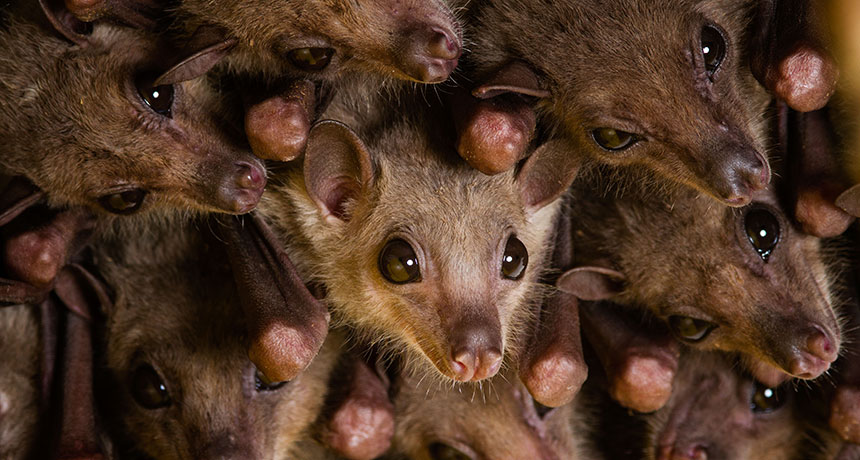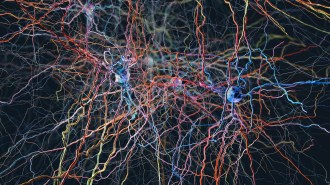Mice and bats’ brains sync up as they interact with their own kind
Studies of the two mammals show coordinated neural activity

SAME WAVELENGTH When two bats are together, their brain activity falls into lockstep, a synchrony that may help coordinate some social behaviors, a study finds.
Andrew Mackay/Alamy Stock Photo






